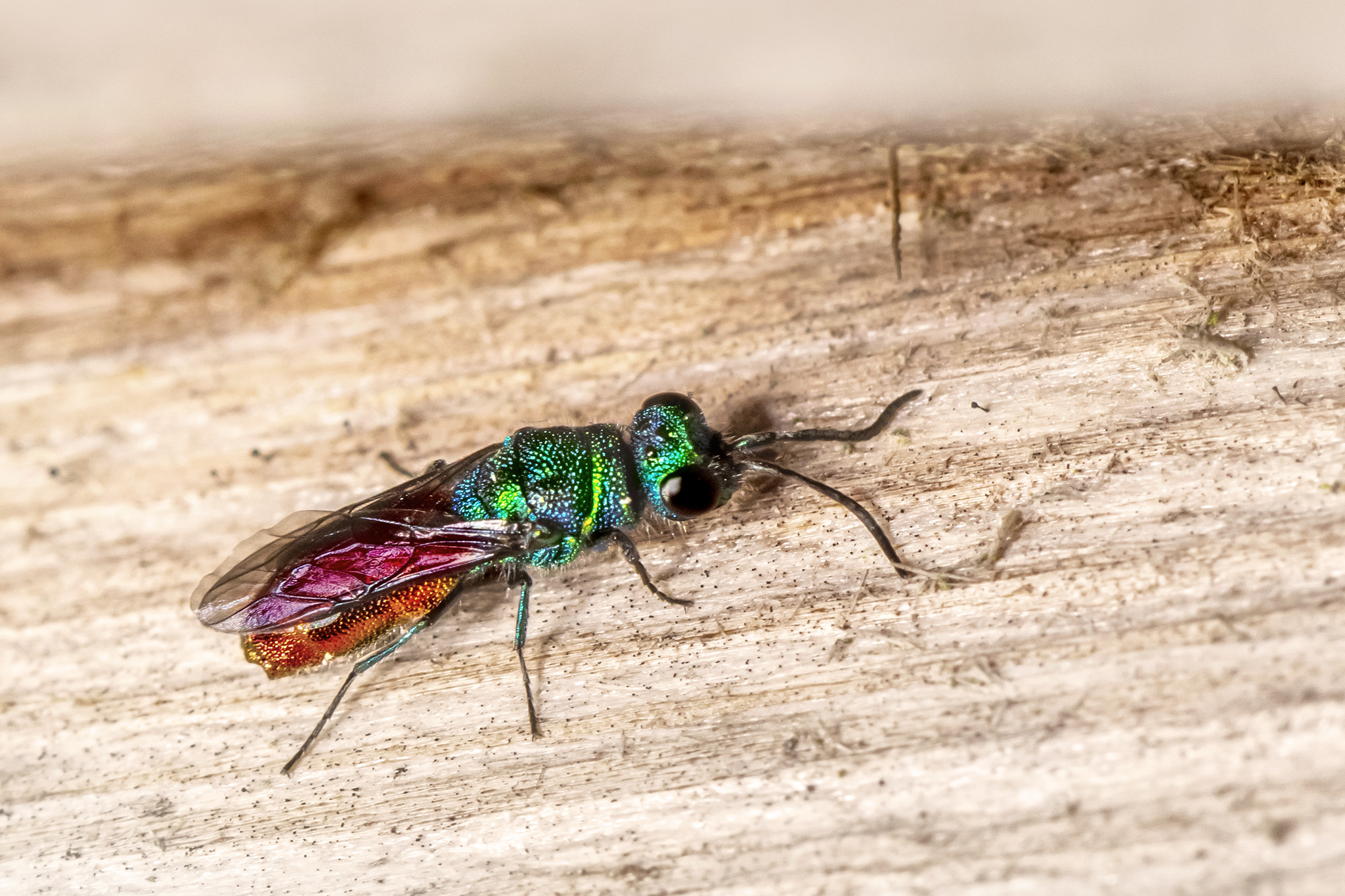Cuckoo Wasp (Chrysis spp.)
The Cuckoo Wasp, especially species from the genus Chrysis, is known for its brilliant metallic colors, often iridescent blue, green, or red, and its parasitic lifestyle. These wasps are beautiful but sneaky, laying their eggs in the nests of other solitary bees or wasps — much like the bird they’re named after.
Physical Characteristics
- Size:
- Generally 6–12 mm (0.2–0.5 inches) in length.
- Coloration:
- Striking metallic colors — often shimmering blues, greens, or reds.
- Their coloration acts as camouflage and warning coloration.
- Body Shape:
- Compact, with a sculpted, armored appearance.
- The abdomen is concave underneath, allowing them to curl into a tight defensive ball when threatened.
Distribution & Habitat
- Found worldwide, especially in warmer climates and temperate regions.
- Common in Europe, Asia, Africa, and North America.
- Prefer sunny areas like meadows, gardens, sandy banks, and wooded clearings where host insects nest.
Behavior & Life Cycle
- Parasitic strategy:
- Lay eggs in nests of solitary bees or wasps (e.g., mason bees, potter wasps).
- The larva hatches and consumes the host egg or larva, then feeds on stored food.
- This type of parasitism is called kleptoparasitism.
- Adult behavior:
- Feed on nectar and pollen, particularly from umbelliferous and composite flowers.
- Females are skilled at locating hidden nests of their host species.
Defense Mechanisms
- Cannot sting, but can curl up into a tight ball to protect vulnerable parts.
- The hard exoskeleton and bright colors help deter predators.
Interesting Facts
- Their metallic colors are due to structural coloration, not pigment — light interacts with tiny surface structures.
- Named after the cuckoo bird for their habit of laying eggs in other species’ nests.
- Over 3,000 known species in the family Chrysididae, with more still being discovered.
Conservation Status
- Most species are not currently endangered, though they depend heavily on the presence of their host species, making them vulnerable to habitat loss and pesticide use.
- Some rare species are considered threatened in parts of Europe due to declines in wild bees and wasps.
Summary
The Cuckoo Wasp (Chrysis spp.) is a brilliantly colored parasitic wasp known for its stealthy reproductive behavior and armored beauty. Found across the globe, it plays a unique role in the ecosystem and is a favorite of insect enthusiasts and photographers alike. Its reliance on other solitary insects makes it a valuable indicator species for healthy, biodiverse habitats.
Views: 1587
Subscribe to the newsletter:
